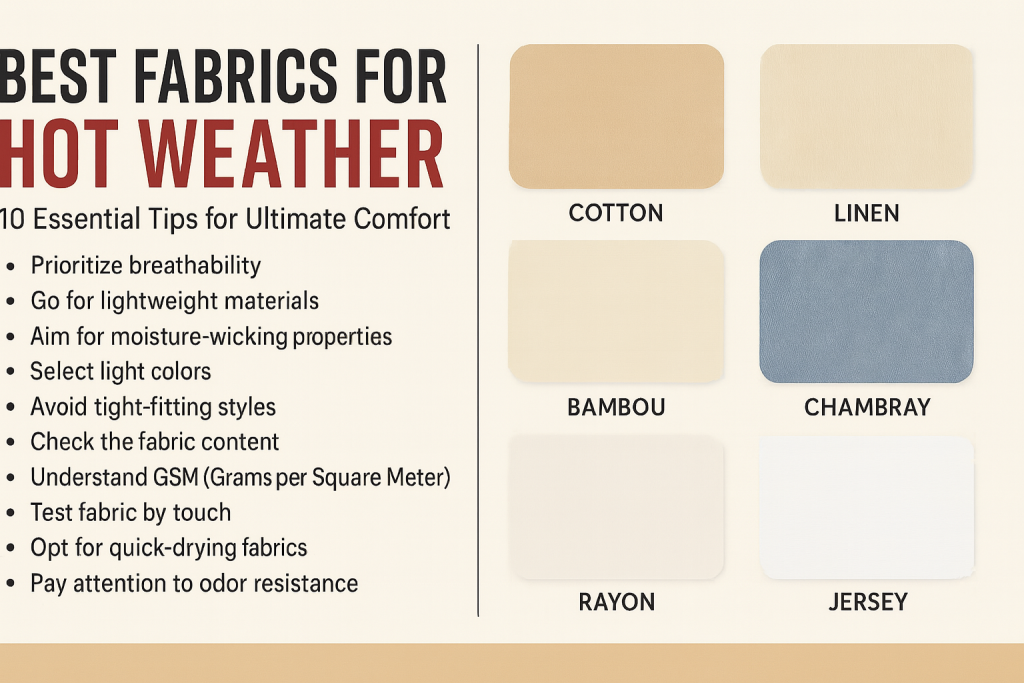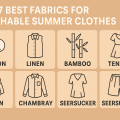Why Choosing the Right Fabric Matters in Hot Weather
As temperatures surge, your choice of clothing can dramatically impact your comfort and well-being. The best fabrics for hot weather are those that promote airflow, wick moisture, and feel light against your skin. Wearing the wrong material can leave you feeling sticky, overheated, and uncomfortable, while the right fabric keeps you cool, dry, and confident throughout the day.
Understanding the science behind how different fabrics behave in heat and humidity can help you make informed choices about your summer wardrobe. Let’s explore the essential factors and fabrics that contribute to the perfect outfit for sweltering days.
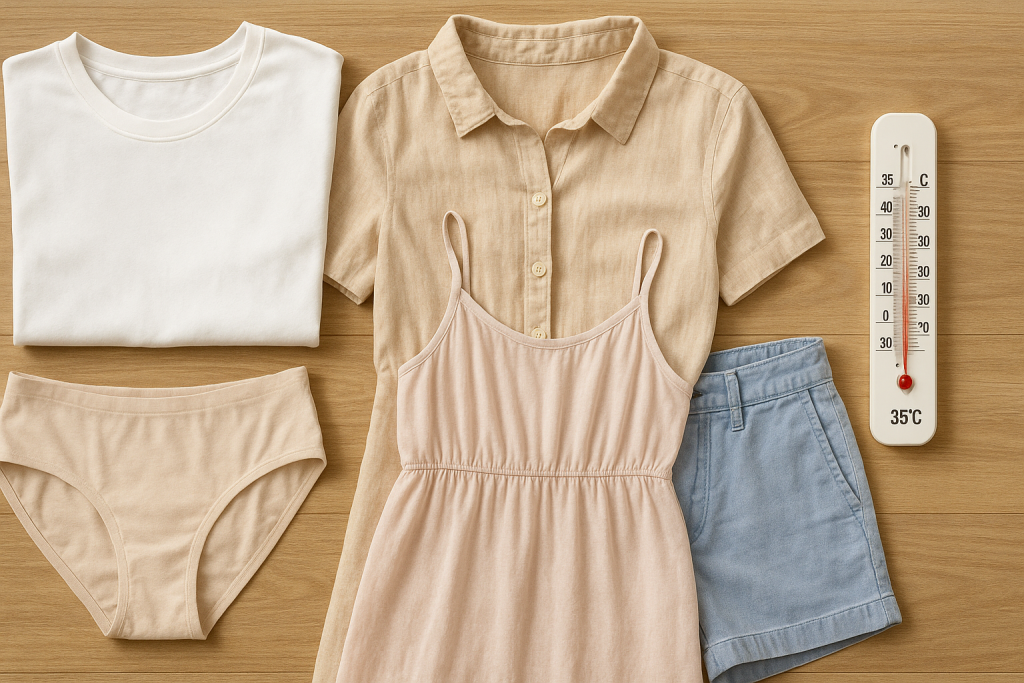
10 Essential Tips for Choosing Hot Weather Fabrics
To stay comfortable when the mercury rises, keep these actionable tips in mind as you select your summer clothing:
- Prioritize Breathability: Choose open-weave fabrics that allow air to circulate.
- Go for Lightweight Materials: The less your clothes weigh, the less heat they retain.
- Aim for Moisture-Wicking Properties: Look for fabrics that pull sweat away from your skin.
- Select Light Colors: Lighter colors reflect sunlight, helping you stay cooler.
- Avoid Tight-Fitting Styles: Loose clothing allows for better ventilation.
- Check the Fabric Content: Read labels to ensure high percentages of natural fibers.
- Understand GSM (Grams per Square Meter): Lower GSM indicates a lighter, cooler fabric.
- Test Fabric by Touch: Fabrics that feel cool and smooth to the touch offer better comfort.
- Opt for Quick-Drying Fabrics: These help you stay dry during intense heat or humidity.
- Pay Attention to Odor Resistance: Some fabrics naturally resist odor, keeping you fresh longer.
Top 6 Fabrics for Staying Cool in Hot Weather
Not all fabrics are created equal when it comes to beating the heat. Here are the best fabrics for hot weather that combine comfort, style, and performance:
Cotton: The Timeless Summer Staple
Cotton is widely considered the go-to fabric for summer. Its natural fibers offer excellent breathability and absorbency, making it ideal for hot, humid climates. Cotton’s lightweight texture allows for excellent air circulation, helping your skin stay dry. Because it’s so common, you’ll find cotton in everything from t-shirts and dresses to shorts and blouses.
However, cotton absorbs moisture rather than wicking it away, so it’s best for casual wear rather than intense physical activity.
Linen: Maximum Airflow and Effortless Elegance
Linen is another natural fiber that outperforms many others in sweltering conditions. Made from the flax plant, linen’s open weave and crisp texture provide unbeatable breathability. It dries quickly, minimizing discomfort from sweat. Linen’s relaxed look and ability to resist clinging make it a mainstay in summer wardrobes, perfect for both casual and formal occasions.
Keep in mind that linen wrinkles easily, but many embrace this as part of its appeal.
Bamboo: Eco-Friendly and Ultra-Soft
Bamboo fabric is gaining popularity for its sustainability and superb comfort. It is naturally moisture-wicking, breathable, and hypoallergenic. Bamboo fabric also has natural antibacterial properties, reducing odor and keeping you fresher for longer. The silky-smooth texture feels gentle on sensitive skin, making it suitable for both adults and children.
Look for high-quality bamboo viscose or blends for the best hot-weather experience.
Rayon: Lightweight and Stylish
Rayon is a semi-synthetic fiber derived from wood pulp. It mimics the properties of natural fibers like cotton and linen but is often softer and drapes beautifully. Rayon’s lightweight nature and breathability make it a solid choice for hot climates. Summer dresses, blouses, and loose pants made from rayon offer both style and comfort.
However, avoid exposing rayon to excessive moisture, as it may become weak when wet.
Chambray: Denim’s Summer Cousin
Chambray is a cotton plain-weave fabric that looks similar to denim but is much lighter and more breathable. Chambray shirts, skirts, and dresses are perfect for achieving a laid-back, summery vibe without sacrificing comfort. Its versatility lets you dress up or down while staying cool.
Since chambray is made from cotton, it shares many of the same breathable benefits.
Jersey: Stretchy and Comfortable
Jersey knit is widely used in t-shirts and athletic wear. Often made from cotton, bamboo, or modal blends, jersey is lightweight, stretchy, and comfortable against the skin. Its moisture-wicking properties depend on fiber content, so opt for natural or blended jerseys for the best comfort in hot weather.
Jersey fabrics are ideal for everyday casual wear and travel.
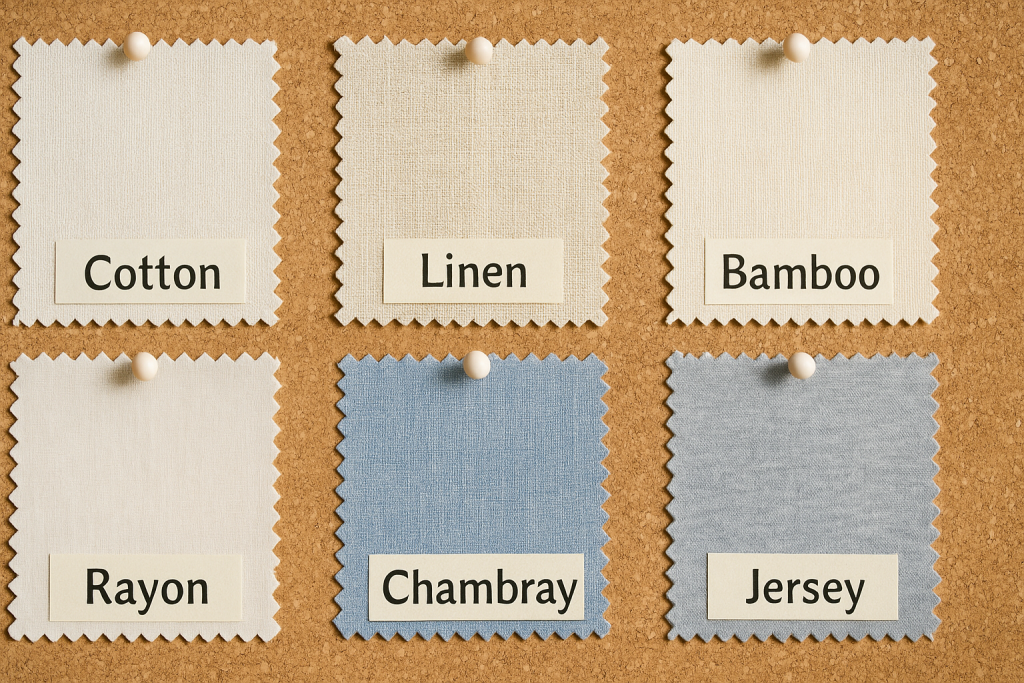
Fabrics to Avoid in Hot Weather
While some fabrics excel in the summer heat, others can make you feel hotter and less comfortable. To stay cool, it’s best to avoid these materials:
- Polyester: Traps heat and moisture against the skin.
- Nylon: Prevents breathability, causing increased perspiration.
- Wool: Warm and insulating – great for winter, not summer.
- Fleece: Retains heat and is not suitable for warm climates.
- Acrylic: Does not allow for adequate air circulation.
These synthetic fabrics are often chosen for athletic wear due to their durability, but unless they’re specifically engineered for breathability and moisture-wicking, they should be limited during hot weather.
How Fabric Weave and Weight Affect Comfort
The way a fabric is woven and its thickness (weight) are just as important as its fiber content. Loose weaves allow more airflow, while tight weaves trap heat. Fabric weight, measured in GSM (grams per square meter), can also determine how hot you’ll feel.
For example, a lightweight, loosely woven cotton will be cooler than a tightly woven, heavy cotton. Always feel the fabric in your hands and check for light transmission by holding it up to the sun—a little transparency often means greater breathability.
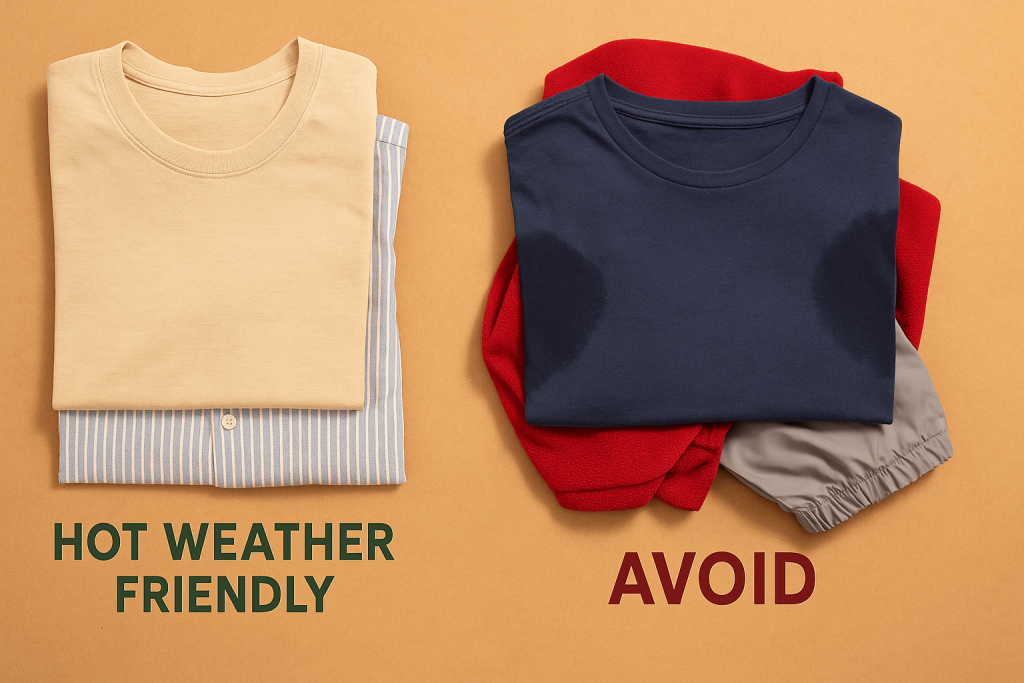
Signs of a Good Summer Fabric
- Lightweight feel
- Easy airflow through the weave
- Quick drying time
- Soft or smooth texture
- Minimal clinging to skin
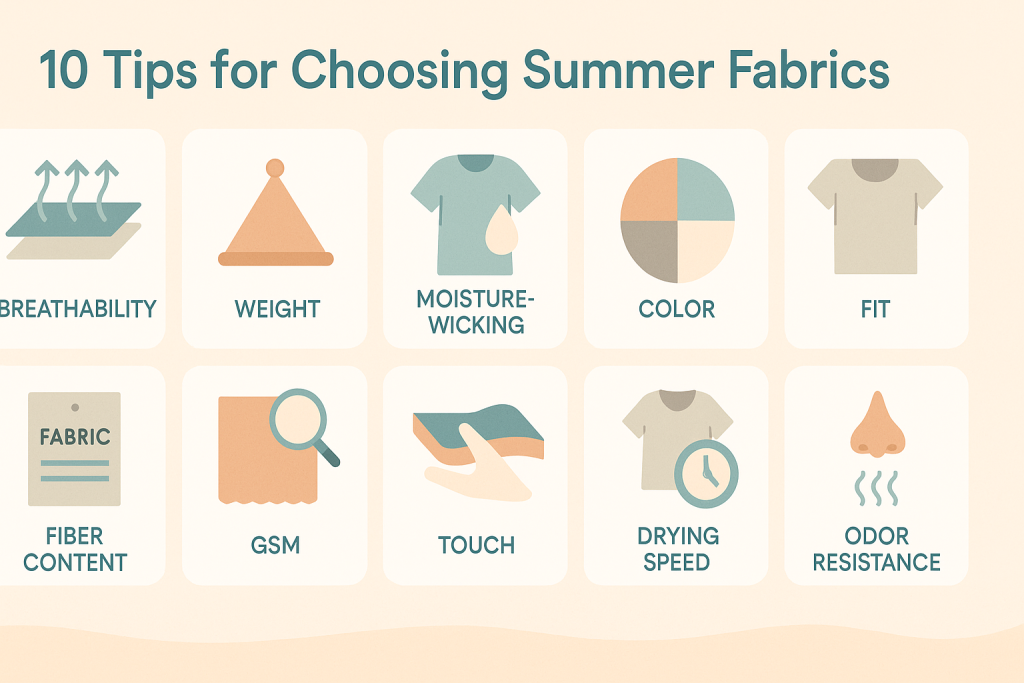
Extra Tips for Staying Cool and Stylish All Summer
Beyond fabric choice, there are additional strategies for maximizing comfort during hot weather:
- Layer Wisely: Use thin, breathable layers for maximum flexibility.
- Choose Loose-Fitting Designs: Flowy silhouettes promote airflow and reduce sweat.
- Accessorize with Hats and Sunglasses: Protect yourself from direct sun exposure.
- Wash Clothes Regularly: Clean, sweat-free clothes feel cooler and prevent skin irritation.
- Use Natural Fiber Undergarments: These wick away sweat and prevent chafing.
Combining the right fabrics with smart clothing choices ensures you’re comfortable, cool, and stylish even on the hottest days.
Conclusion: Your Guide to Choosing the Best Fabric for Hot Weather
Staying cool in hot weather goes far beyond just choosing the right style—it’s about selecting the best fabrics that breathe, wick moisture, and feel comfortable against your skin. By focusing on natural fibers like cotton, linen, and bamboo and avoiding synthetic, heat-trapping materials, you can enjoy every summer day to the fullest.
Use these expert tips and material insights to build a versatile, comfortable wardrobe that keeps you at your best, no matter how high the temperature climbs.
